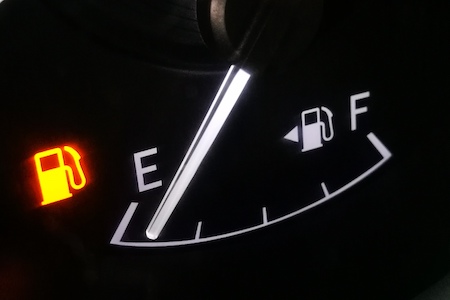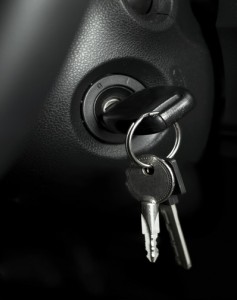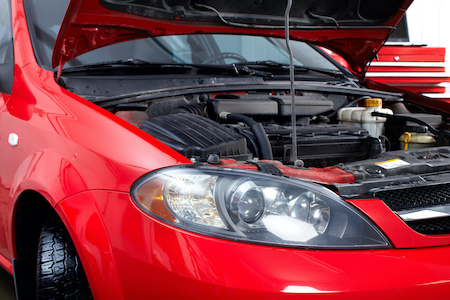When gas prices are low, how much you spend filling up your tank each week might not be of concern. But the higher the prices climb, the more aware you are of the vehicle you drive.
On average, today’s passenger vehicles get just over 24 miles per gallon. For light trucks, that number falls to 17.5.
That can be a big deal if you drive hundreds of miles each week. It can cut into your budget very quickly.
Yet a vehicle comes predisposed with limits to the mileage it can achieve. You can’t change that. Right?
Turns out, you can. If you’re looking for ways to improve the gas mileage of your pickup truck, read on.
Regular maintenance is key
Every bump you hit in the road, every mile you put on your pickup truck, every trip you take, adds to the wear and tear of your vehicle. Regular maintenance is the best way to counter problems that arise over time.
This includes getting the oil changed according to manufacturer’s guidelines. It also includes ensuring your tires are inflated to proper levels, and maintaining them so you aren’t driving on under-inflated or poor quality tires.
Check your owner’s manual for the ideal pressure for each tire. It’s also listed on the panel inside the driver’s door. Do not go beyond the maximum pressure, and ensure it doesn’t fall below minimum pressure as you drive. Especially in Colorado’s harsh driving conditions, both can put you at risk for blow-outs and flat tires.
Be aware of aerodynamics
 Pickup trucks are meant to haul. That’s why you bought your truck. It’s a workhorse, designed to help you do your job well.
Pickup trucks are meant to haul. That’s why you bought your truck. It’s a workhorse, designed to help you do your job well.
Yet as you’re driving around each day, be aware of how you carry different loads. Would a bed cover help protect what’s inside? It might also provide better aerodynamics as you sail down the highway. Can you avoid roof racks and large items challenging the way you drive? Every item that changes the dynamics of your vehicle has the potential to reduce the way your truck moves.
Stop aggressive driving behavior
Traffic on Colorado roads can be crazy at times. How you approach each drive determines how many miles per gallon you’ll get with each tank of gas. Aggressive behavior means you consistently stop and go, apply the brakes, and waste gas.
Back off the person in front of you and learn to slow down and take it easy. Tailgating won’t get you where you’re going any faster, and it puts you and the cars around you at risk. When you can, use your cruise control to help remain at a constant speed. And slow down and respect speed limits, they are designed to help you achieve the highest gas mileage possible. Plus, it keeps your car safer, which means less risk of accidents and potential servicing issues.
Use the right gas
When manufacturers designed your pickup, they did so with optimal performance in mind. They build systems to accept certain types of oil, and specific types of gas. Don’t skimp on which fluids you select to put into your truck.
If the manufacturer suggests regular, it’s for a reason. Don’t add premium, assuming it will be better for your vehicle. If you select a reputable brand of gas rather than finding the cheapest in the city, you’re also ensuring the gas is high quality and contains additives designed to keep your truck running well.
Stop hauling extras
It’s a pickup truck; why not throw a few extra things in the back? A few sandbags for weight. A toolbox just in case. Pretty soon, you’ve added dozens of additional pounds to your vehicle, which ultimately takes more energy to move around town.
Your pickup came with suggested gas mileage ratings based on how it performs as designed. The more weight you add to it, especially unevenly as things are scattered around your truck, it can throw those averages off. Want an easy way to improve your gas mileage? Keep your truck bed clean.
Stop idling
Most drivers would be amazed at the amount of time they spend idling in their vehicles. You sit on the highway in rush hour, you sit multiple cars deep, waiting for drive-thru service. Instead of spending minutes every day wasting your gas in this manner, pull into a parking spot and go inside instead. In many cases, you’ll be in and out faster, and you’ll save on gasoline in the process.
Plan your route
How many trips, on average, do you take each day? Do you leave your home or office multiple times, stopping by to pick things up, running errands, and driving just to stay busy? Driving multiple short trips each day cuts into your gas mileage.
Instead, plan your trips before you ever leave. Can you drive a loop, completing errands as you go? Can you put off certain trips until you have multiple things to do in one area? Can you create days where you run errands, and days where you stay and work from home or the office? This might even add to your productivity levels.
Pay attention to gauges
Today’s vehicles are more automated and technologically advanced than ever before. It’s easy to ignore those little icons as they light up on your dashboard, or the service messages that dance across your instrument panel. They are there for a reason.
Think of them as an extension of your to-do list. They are a gentle reminder that it’s time to give your pickup truck a little TLC.
Staying ahead of potential problems not only produces a more reliable vehicle, but it also extends the life of your truck.
Are you getting the best gas mileage possible with your pickup truck?

 Did you know every make and model comes with a handy guide that provides guidelines for how to repair your car over the years? Who better to keep you on track for maintaining your vehicle than the people that built your car?
Did you know every make and model comes with a handy guide that provides guidelines for how to repair your car over the years? Who better to keep you on track for maintaining your vehicle than the people that built your car? You expect your key to turn in your vehicle’s ignition…but sometimes…it won’t, and that’s a problem. Whether you’re trying to start your vehicle or trying to leave it, it’s a problem.
You expect your key to turn in your vehicle’s ignition…but sometimes…it won’t, and that’s a problem. Whether you’re trying to start your vehicle or trying to leave it, it’s a problem. polluters off of the roads. Several counties require an emissions test to register a vehicle, including:
polluters off of the roads. Several counties require an emissions test to register a vehicle, including: There are a lot of reasons to
There are a lot of reasons to  The way cars are produced has changed a lot over the years. To say they’ve gone through a massive overhaul in the last century would be an understatement.
The way cars are produced has changed a lot over the years. To say they’ve gone through a massive overhaul in the last century would be an understatement. Think of how much technology has changed vehicles in the last several years. And there’s a lot more coming.
Think of how much technology has changed vehicles in the last several years. And there’s a lot more coming. Everything we discussed above that comes equipped with a front-wheel drive car is reversed with a rear-wheel model.
Everything we discussed above that comes equipped with a front-wheel drive car is reversed with a rear-wheel model.
 It’s personal to them. They want the car gone. They may stretch the truth, mask potential problem areas, and sell you on the good features of the car, ignoring what they know to be problem areas.
It’s personal to them. They want the car gone. They may stretch the truth, mask potential problem areas, and sell you on the good features of the car, ignoring what they know to be problem areas.